Charleston, the City by the Sea
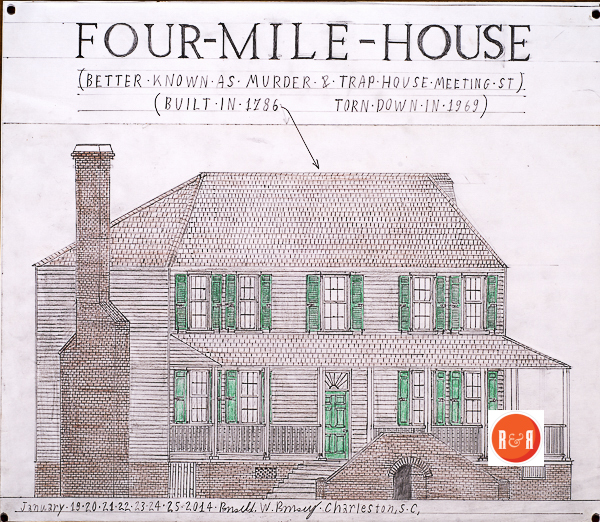
Courtesy of Halsey Institute of Contemporary Art: Rick Rhodes – photographer, Ronald Ramsey artist – preservationist, 2017.
“No sketches of Charleston similar to those describing life in other South Carolina communities appeared in the News and Courier during the 1880s. At first, this may seem a bit strange, but the truth is that newspaper and its staff were reporting events in Charleston on a day-to-day basis and the data was simply too big, too complex to encompass successfully in a few columns. Nevertheless, about the first of September each year the News and Courier made an effort to do just that, publishing a comprehensive compendium heavily laced with commercial and industrial data. This “annual report” often covered several pages and presented a mass of statistical information, much of which subsequently was reproduced in the famous City of Charleston Yearbooks.
GALLERY SHOWING CHARLESTON as seen on Roots and Recall’s pages.
The focus of these surveys varied from year to year, sometimes expanding to regions other than Charleston and to topics such as cotton mills, the condition of crops throughout South Carolina, railroad development, manufacturing, education, and so on. At times, information concerning commercial centers outside the state was also included. Thus the best sources on life in Charleston in the 1880s are these September issues of the News and Courier and the City
of Charleston Yearbooks, although neither provides the reader with the succinct capitalization Matthew Tighe, Ambrose Gonzales, and others achieved during visits to places such as Rock Hill, Greenwood, Aiken, and Marion.
The report of September 11, 1890, covering about five and one-half pages, opens with a summary of exports and imports during the past twelve months, a list of duty building permits issued in that period, and an overview of manufacturing. This information is followed by data on wholesale trade, phosphates and fertilizers, regional production of rice, cotton, naval stores, fruits and vegetables, Charleston Harbor tonnage, and the city’s rail facilities. The study concludes with a largely social section entitled “The City in General” and a brief survey of economic conditions in Moultrieville, Mount Pleasant, Summerville, Spartanburg, and Greenville. Here are some pertinent excerpts describing life in Charleston as that community entered the “Gay Nineties.”
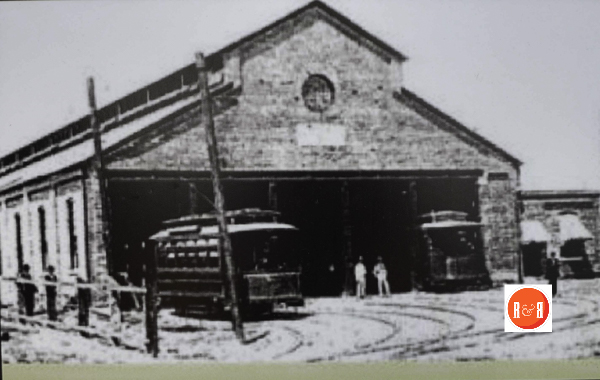
Charleston Trolley Building – Image contributed by Gazie Nagle (11.19.16), Charleston RR and the American College of Building Arts.
The manufacturing industries of Charleston have flourished during the year 1889-90, and both in capital invested and value of annual products show a handsome increase over the figures of last year. The total number of manufacturing enterprises has increased from 341 to 360. The number of hands employed has increased from 4,838 to 5,722. The capital invested has increased from $6,946,000 to $8,997,500.
Charleston’s wholesale trade, despite stiff competition from other metropolitan centers, continued to prosper. The most important commodities were groceries, dry goods,
- Restoration of the Charleston Trolley facility in 2016 – Photo by Gazie Nagle @ www.fineartbygazie.co
- Photo by Gazie Nagle @ www.fineartbygazie.com
hardware, hats and caps, doors, sashes and blinds, crockery, ice, grain and feed, drugs and medicines, paints and oils, fruit, cigars and tobacco, boots and shoes, paper and stationery, fish and oysters, jewelry and watches, and beer and soda. The following table shows the wholesale and retail trade of Charleston for the year ending August 31, 1890.
The city government had an income from all sources in 1889 of $596,136.54, about $20,000 less than in 1888. Real and personal property valued at $21.4 million returned $402,790 in taxes. Personal property subject to the 28-mill levy included 1,477 horses and mules; 284 neat cattle; 1,024 gold and silver watches and plates; 512 pianofortes, melodeons, and cabinet organs; 445 carriages and buggies; 1,036 wagons, drays, etc.; 689 dogs; merchandise (money and credits pertaining to business) valued at $1,643,141; materials, machinery, and fixtures of manufacture valued at $872,180; money, bank bills, and circulating credit worth $492,218; stocks and bonds (exclusive of national, state, and city bonds and receipts of insurance and express agencies, and telephone and telegraph companies) valued at $2,828,877; boats and vessels worth $127,490; and all other property, including household furniture, valued at $414,280. The total value of all personal property was $6,600,087.
Ninety-three new buildings were erected during the year with an estimated value of $150,000. This was considerably less than in 1888-89 when 151 structures valued at $434,000 were erected. Last year’s schedule, however, included several public buildings, among them, the Courtenay School ($25,000), the Y.M.C.A. building ($25,000), and the Enston Home ($110,000). In this year’s schedule the new Post Office building is not included. To this $150,000 must be added $65,000 spent in the repairs of old buildings, making the total expenditures for the year about $215,000 in the way of improving the city.
Bond, Oliver James, educator; born Marion, S. C., May 11, 1865; son of Oliver James and Sarah Ann (Wayne) Bond. B. S., the Citadel, Charleston, S. C., 1886; Ph. D., Illinois Wesleyan University 1895; L.L. D. University of S. C., 1912. Assistant Professor Mathematics 1886, later professor mechanical drawing and astronomy, President, 1908 , the Citadel. Member Sigma Alpha Epsilon, Carolina Golf Association, St. Andrews Society; Club, Charleston County (ex-president). Author, Amzi (novel), 1904. Married Mary Fishburne Roach of Bamberg, S. C., July 9, 1889. Member Episcopalian Church. Address, The Citadel, Charleston, S. C. Courtesy of Who’s Who in S.C. – 1921

HISTORIC ART OF RONALD W. RAMSEY: Artwork courtesy of Halsey Institute of Contemporary Art: Rick Rhodes, Ronald Ramsey artist – preservationist, 2017. (For the last several decades, native Charlestonian Ronald Wayne Ramsey has focused on meticulously documenting historical buildings—particularly those slated for demolition—in his hometown. As old buildings in the historically-minded city become condemned and readied for demolition, he secrets himself inside and liberates various seemingly mundane objects from their impending destruction. Such objects, like hinges, shutter dogs, decorative ironwork, doorknobs, and other ubiquitous building artifacts gain new relevance once they become part of his salvaged collection, which traces architectural styles from Charleston’s rich architectural legacy. Along with these objects, Ramsey creates fastidiously detailed drawings of old building facades in the city. Text from the Ahead of the Wrecking Ball Exhibit – 2017) Mr. Ramsey’s work is displayed across the pages of Charleston County’s R&R site. To find other examples, simply inset “Ronald Ramsey” into the search bar.
The College of Charleston, one of the oldest and best of the educational institutions of the land, is the crown of the educational system of Charleston. Under the present management it is doing some of the best work ever done within its venerable walls. The College is well supplied with all the facilities for imparting knowledge. Its selected library of several thousand volumes is one of the best in the whole country, and it will be very difficult to find anywhere a better collection of the specimens of natural history than can be found in the Museum of the College of Charleston. Its laboratory and chemical rooms are well supplied with all the apparatus needed in the teaching of the sciences. In all of its work the professors insist upon thoroughness. No effort is made to swell the list of alumni, but a united effort is made by the entire faculty to see that no name is added to that long line of men, many of whom have been leaders of their fellow-men, in religion and literature, in science and in business, in peace and in war, who cannot stand the required test of scholarship.
The College has felt the effects of cyclone and earthquake, but in spite of it all it is still doing good work in the cause of education. The prospects are now brighter than they have ever been. The students are interested in their work and are enthusiastic workers for the College. The pride of Charleston, as well as of the whole State, is the Citadel, the South Carolina Military Academy. This noble institution of higher education is now doing its best work. The standard is high and all the work is thorough. The institution is better equipped now than it has ever been. There are now 153 cadets enrolled. They are under the control and direction of the following faculty: Gen. George D. Johnston, superintendent and professor of moral and political science; First Lieut. C.H. Cabaniss, Jr., 18th Infantry, U.S.A., professor of military science and tactics; Major St. James Cummings, professor of English literature and history; Major C.L. Reese, professor of chemistry and physics; Major R.G. Thomas, professor of mathematics and engineering; Capt. RR Mazyck, assistant professor in charge of modem languages; Second Lieut. O.J. Bond, assistant professor of mathematics and in charge of drawing and bookkeeping; Second Lieut. J.P. Kinard, assistant professor of English literature and history; Second Lieut. J.T. Coleman, assistant professor of chemistry and physics; F.L. Parker, M.D., surgeon; and First Lieut. W.W. White, quartermaster. Gen. Johnston resigned the superintendency at the close of the last session and his successor has not yet been elected.
In one respect, at least, Charleston leads all other Southern cities and that is in the excellence of her public school system.
The schools are the pride of the city. The citizens pay their school tax as cheerfully as they pay their grocer’s bill. The public schools have a reputation throughout the United States for thorough work. The system is conducted on modern methods and is constantly kept up with the advancing ideas of this rapidly growing age. During the past year there were enrolled 5,287 pupils in the six schools of the city, of whom 2,135 were males and 3,152 were females. There were 2,803 white pupils, of whom 1,041 were males and 1,762 were females. There were 2,484 colored pupils, of whom 1,094were males and 1,390 were females. The total average attendance for the nine and a half months was 4,971, divided as follows: Whites, males 940, females 1,658; colored, males 1,029, females 1,307. The division of the pupils according to their studies was as follows: Alphabet, 723; spelling, 4,564; reading, 4,564; writing, 3,841; mental arithmetic, 3,563; written arithmetic, 3,563; geography, 2,831; English grammar, 1,429; history of the United States, 1,227; and higher branches, 526. There are 110 teachers employed in the public schools, of whom 9 are Southern white males, 97 Southern white females, and 4 Southern colored females. The average monthly salary of the male teacher is $135 and of the female $49.75. The city owns 6 school houses, representing a value of $149,334.07. The High School of Charleston is one of the most thorough training schools for boys in the South. Its course of study is judiciously arranged so that a boy at graduation is prepared to enter college or is fully equipped for work in the business world. The average attendance last year was 150.
Charleston is well supplied with schools for the education of young ladies. The select school of Miss I.D. Smith, the Academy of our Lady of Mercy, and the Charleston Female Seminary, of which Miss Etta A. Kelly is principal, are all institutions of high order. They are largely patronized at home and also draw many pupils from abroad. There are also a large number of private schools where the best of training is given. For boys, the University School under Prof. W.D. McKenny, the German School under Prof. C.H. Bergmann, and Mr. Louis Manigault’s schools afford excellent private instruction. Avery Normal Institute and the Wallingford Academy are doing a fine work for the higher education of colored pupils. They are both under excellent management and are largely attended. Both are supported in part by contributions from Northern philanthropists.
It is no news to Charlestonians that the city has been free from epidemic disease for nearly twenty years. The recent improvements at the quarantine station and the establishment of the Holt system of disinfecting ships will promote the health conditions immensely. In the report of the board of health for 1889 the following statement is made: “We have escaped pestilence and epidemic disease and the list of mortality is not excessive, although there are a greater number of deaths, both in white and colored, than in 1888. The number of deaths among the whites is considerably below the average for the past ten years, 526 being recorded for 1889, and the average for the decade being 547; the population naturally is increasing, so that we may claim some progress in an improved health record. The population of the city in 1889 was estimated by the health department at 60,145 viz.: Whites 27,605, blacks and colored 32,540. On this basis the proportion of deaths was: Whites, 1 in 52; blacks and colored, 1 in 22. Total population, 1 in 30. The city is divided for sanitary and medical purposes into four health districts, each district being under the care of a sanitary inspector. These inspectors make a written report every day at 12 o’clock to the health officer, noting all nuisances and reporting all vaults and imperfect drains for cleansing and relief—the early hours being devoted to superintending the removal of garbage.
No new banks have been started during the year. The existing institutions have banking capital of $1,340,000, a surplus account of $1,422,400, and a deposit account of $7,664,000. Of the thirteen banks doing business in Charleston, three are national, two State, and eight savings banks. One of the national banks, the People’s, and one of the State banks, the Loan and Trust, have savings banks attached. The banks have all done a prosperous business, all of them paying dividends ranging from 6 to 10 per cent, and some even larger. Charleston has always been in the foreground in the organization and development of building and loan associations, institutions which contribute largely to the prosperity of the community by enabling the laboring classes to save their earnings and thus become their own landlords. All institutions of this character which have heretofore existed and have wound up their affairs have borne evidence of successful management, and within one hundred months cancelled mortgages and cleared the homes of all liability.
The Charleston Telephone Exchange is the third largest in the Southern Bell Telephone and Telegraph Company’s territory. Atlanta ranking first, Richmond second, and Charleston third. The number of stations in use is five hundred and is increasing daily. The number of connections made daily is about 7,000, all the year around, and during the fall months it is sometimes larger. There are twenty employees connected with the Exchange, eight operators, four inspectors, three in the burglar alarm department, and five linemen.
During the past year the business of the Exchange has been good, and the number of stations larger than in the previous year. There are sixteen long lines connected with the Exchange, notably Mount Pleasant and Sullivan’s Island (these two lines are cabled two miles under water), Ashley Phosphate Company, eighteen miles in length, Mead & Co.’s mines, ten miles, and in fact all of the phosphate companies. The company is now putting in a multiple switch-board at a cost of $3,000, which will add greatly to the efficiency of the Exchange. Its capacity will be eight hundred subscribers; the present board only has room for five hundred. The board will be in three different sections and will be so arranged that each operator will have every subscriber before her. The company is contemplating the establishment of an Exchange at Mount Pleasant, so that subscribers, instead of having to come to the central office and do their talking with Charleston, can do so from their stations. They also hope to have Summerville connected by telephone with the Exchange in a very short time.
During the past year two new and powerful steamers have been added to the fire department, which, as is well known, has no superior in any duty in the United States. The force now consists of seven steamers in active service, three reserved steamers, a hook and ladder truck, and a salvage wagon supported by the board of underwriters. The seven steamers of the force are concentrated in three improved engine houses, so situated as to give the firemen the quickest access to all parts of the duty. So perfect is the discipline and the system that it is impossible that there should be a disastrous conflagration except under the most extraordinary circumstances.
There have been no changes to speak of in the street railroad situation during the year except the extension of the City Railway track through Schutzen Avenue to the gate of the Park. The same company has also in view the building of tracks through Spring Street, connecting the main lines through Rutledge Avenue and King and Meeting streets. This will give the residents of the West End a continuous line to Magnolia Cemetery.
It is probable, however, that the coming year will see important changes for the better in the system. It is understood that the Enterprise Railroad Company has already practically decided upon substituting the electric motor for the present method of locomotion, while the president of the City Railway has been in the North looking over the field with the same object in view. At present the streets of Charleston are traversed by about thirty miles of tracks, over an area of not over seventy-five miles of streets.
The Government has three enterprises on its hands in Charleston, not counting the work on the Jetties. They are (1) the new Post office, (2) the Custom House wharf, and (3) the old Post office. The most important of these is, of course, the new Post office, with the progress of the work on which the public have been kept pretty well posted. In the Annual Review last year the News and Courier said about this work: “There has been a good deal of vexatious delay in the progress of the work owing to the inevitable red tape that hobbles all public work, and also to the failure of the contractors to furnish the piles for the foundation. Most of the piling and the concrete foundations have been completed, and it is hoped that the wails of the new building will be above the ground before the first of January next.”
The work during the year just closed may be summed up in a few words. The walls came very nearly up to the surface, but then they had to be taken down again. At present the Government is leisurely engaged in undoing the foundation work that was so loosely and imperfectly done, and at the present rate it is possible that the walls may be seen to rise above the ground some time early in the twentieth century. It may be stated that most of the granite for the first course of the walls has been cut and is on the ground ready to be put up. Nothing can be done, however, in the way of pushing the work until the concrete foundation has been removed and the seven hundred or more piles upon which the foundation is to rest have been tested.
The work on the Custom House pier is progressing as rapidly as possible and is nearing completion. The north pier is almost completed as far as the granite work is concerned. The contractors are now at work on the iron pier head. In the old Post Office the work of repair is going on rapidly and without interference with the business of the office. In the Annual Review of the News and Courier on September 1, 1889, allusion was made to the recent completion of the third and largest Artesian well, constituting our public water supply. The flow from this well has been constant at the rate of 824 gallons per minute. This quantity, together with the yield of the George Street and Marion Square wells, gives a daily supply of more than two millions of gallons, which is considerably in excess of the present consumption.
The Yorkville Enquirer reported on June 29, 1871 – “There is considerable opposition from the draymen in Charleston to the building of a rail line, known as the Enterprise Railroad, which would transport freight between the wharfs and railroad depots.”
The Charleston Trunk Company began business at 260 King Street on the 1st of February, 1890. This thriving establishment is under the management of George W. Rabb & Co. and is one of the first factories of the kind in this part of the State. It manufactures and repairs all kinds of leather traveling goods and makes a speedlay of sample work. The wholesale and retail departments of the business are both very large, and much success has been met with in building up a permanent trade in this and adjoining states. During the past year two new fertilizer companies have been organized in Charleston. The Imperial Fertilizer Company, with a capital of $150,000 and with the following corps of officers, is doing a fine business.
The Yorkville Enquirer of June 9, 1870 reported – “A company has been organized in Charleston under the name Chicora Mining and Manufacturing Co., with a capital stock of $70,000. The company has secured lands within seven miles of Charleston and will manufacture fertilizers. The Pres. is Mr. A.D. Estill and the Sec., is Mr. T.A. Witsell.”

Charleston’s architectural jewels are around each corner and on every street.
The Chicora Fertilizer Company was organized a few months ago as follows: A.S.J. Perry, president; B.F. McCabe, vice president; George A. Wagener, secretary and treasurer. The capital stock is $300,000, and the Charleston Mattress and Woodware Company has been in successful operation for nearly a year. The company was chartered in August, 1889, and the factory in King Street was immediately built and operations commenced. The business of the company had not started actively until about the middle of last November, when traveling salesmen were put on the road to sell the wares of the company. A ready and profitable sale was found, and the company is now making money and is on the way to success. At present the company is engaged in the manufacture of mattresses, cots, pillows, bed springs, and woven ware. In the manufacture of the mattresses the company uses straw, excelsior, corn husk, cotton, moss, and hair. The company now has a large business in this State, as well as Georgia, North Carolina, and Florida. Mr. E.B. Miler is engaged by the company as traveling agent. The factory employs about twenty hands, of whom two are women. The capacity of the factory is about one hundred mattresses a day. The officers of the company are as follows: President, A. Johnson; secretary, E.B. Miler; solicitor, W.St.J. Jervey; directors, J. Adger Smyth, James F. Redding, A. Johnson, M.D. Maguire, and George A. Wagener.
The McClellanville and Santee Steamship and Transportation Company was organized early in the year with $4,000 capital. They now own one steamer, the Louise, which plies regularly between Charleston and McClellanville, doing a splendid business in both passengers and heavy freight. Their freight consists very largely in bringing down turpentine and naval stores and carrying back provisions and plantation supplies. The business is most encouraging, meeting in every way the expectations of the owners. The Louise is a compact little steamer, which was built by Mr. Ball of Mount Pleasant. She stands her passage well and gives every promise of a long career of usefulness. The officers of the company are: John L. Weber, president; Leland Moore, secretary and treasurer. Capt. Charlton Leland is in command of the steamer.
Charleston is doing business at the old stand! Its business is growing in every direction. The prospect for the future is brighter than it has been at any time since the close of the war. The opportunities for development are greater, the facilities for handling business are being steadily improved, the railroads are reaching out to new territory, and the ships are coming in from all parts of the world. We are on the threshold of a new commercial era. There is life, and activity, and hope, and courage in the air.
The story which we tell today of what Charleston has done during the past twelve months is enough to encourage the weakest heart and to add new zeal and energy to the stout hearts and strong arms which have in the past stood up for Charleston and Charleston’s interests against all competitors—against the world. The time which we have all longed for and hoped for is near at last. The past is forgotten; the present and the future have clasped hands.
The record of the year ending August 30, 1890, is such a record as we all desired to make. It shows that, during the past year, the business of the city, as compared with the preceding year has increased $3,966,293. The progress has been general and steady. New enterprises and new industries have been added to the city’s busy life. The outlook is most encouraging. With improved facilities, with an increasing population, with all Charleston at work, and at work for Charleston, the future contains no height of commercial supremacy which cannot be scaled, and presents no obstacle which cannot be overcome.”
Reprinted in part from: South Carolina in the 1880s: A Gazetteer by J.H. Moore, Sandlapper Publishing Company – 1989
The Ship; Prospect Armed in the Revolution….
Preservation Art at Work: Courtesy of Halsey Institute of Contemporary Art: Rick Rhodes – photographer, Ronald Ramsey artist – preservationist, 2017. (For the last several decades, native Charlestonian Ronald Wayne Ramsey has focused on meticulously documenting historical buildings—particularly those slated for demolition—in his hometown. As old buildings in the historically-minded city become condemned and readied for demolition, he secrets himself inside and liberates various seemingly mundane objects from their impending destruction. Such objects, like hinges, shutter dogs, decorative ironwork, doorknobs, and other ubiquitous building artifacts gain new relevance once they become part of his salvaged collection, which traces architectural styles from Charleston’s rich architectural legacy. Along with these objects, Ramsey creates fastidiously detailed drawings of old building facades in the city. Text from the Ahead of the Wrecking Ball Exhibit – 2017
Stay Connected
Explore history, houses, and stories across S.C. Your membership provides you with updates on regional topics, information on historic research, preservation, and monthly feature articles. But remember R&R wants to hear from you and assist in preserving your own family genealogy and memorabilia.
Visit the Southern Queries – Forum to receive assistance in answering questions, discuss genealogy, and enjoy exploring preservation topics with other members. Also listed are several history and genealogical researchers for hire.
User comments welcome — post at the bottom of this page.



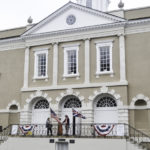
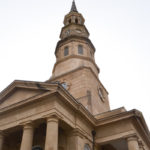

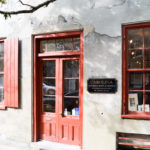



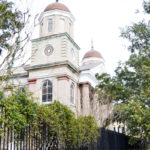
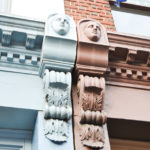
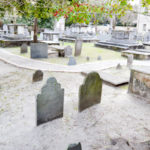







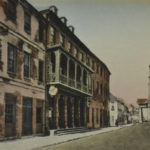
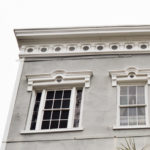

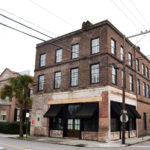






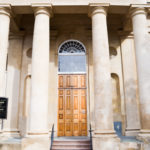











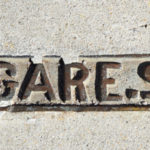






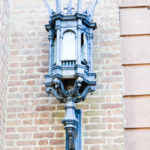






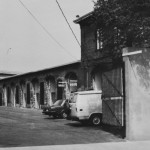



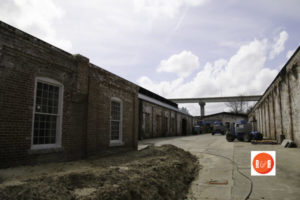
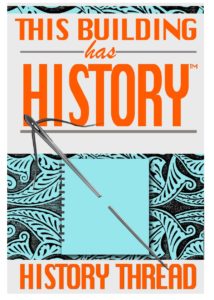


Share Your Comments & Feedback: